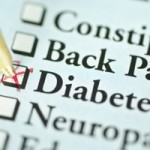 A significant number of people are not even aware that they have been affected with diabetes. The irony is that the rise in the number of diabetes cases (that is type 2 diabetes) is often due to misleading information. And it is often preventable, or at least in many cases there is something you can do about it.
A significant number of people are not even aware that they have been affected with diabetes. The irony is that the rise in the number of diabetes cases (that is type 2 diabetes) is often due to misleading information. And it is often preventable, or at least in many cases there is something you can do about it.
Diabetes mellitus, or simply diabetes, is a metabolic disorder. Metabolism is a set of organic processes that keep on going inside the body without you being aware of them. These processes are necessary for maintaining life. The one involved in diabetes relates to the conversion of sugar content of food into glycogen, the form in which energy is stored in the body. Stored energy is broken down into glucose when needed by the body.
Diabetes is a metabolic disturbance caused by two different factors, both related to insulin. Insulin, a hormone secreted by the pancreas, regulates storage of glycogen in the liver and speeds up oxidation of sugar in cells.
Diabetes type II is the development of insulin resistance despite there being an adequate supply of insulin. Diabetes type I is the inadequacy of insulin due to pancreatic disorder. The bottom line is that there is an increase in the blood sugar level, while some of the excess sugar is passed off through urine.
Diabetes is characterized by several symptoms, such as an increased frequency of urination, increased urine output and an increase in thirst and hunger. Many times, these symptoms may also be due to another condition and not related to diabetes mellitus.
This is a rare form of diabetes known as diabetes insipidus, which results from a deficiency of vasopressin (hormone secreted by the pituitary gland, which regulates the kidneys) and is characterized by chronic excretion of a large amount of pale dilute urine, resulting in dehydration and excessive thirst. The difference is that the urine does not contain glucose, and the condition is not marked by high blood sugar.
The normal blood sugar level is between 70 and 110 mg/dl. If the sugar level becomes less than 70 ml/dl, it is characterized as low blood sugar or hypoglycemia, whereas if it goes above 110 mg/dl, it is high blood sugar or hyperglycemia.
Untreated diabetes mellitus eventually leads to a cessation of glucose breakdown by the body, and the body starts using fat and protein for meeting its energy needs, resulting in excessive weight loss.
What actually starts as harmless symptoms, that is, increased urination, thirst and hunger, can potentially lead to adult blindness, gangrene, and amputation (due to infections caused by slow healing of wounds). Untreated diabetes eventually leads to kidney failure and death.
The key to controlling type 2 diabetes lies in cutting down on refined carbohydrates and eating smaller meals at regular intervals. Eat lots of plant foods, avoid sugary drinks, and choose unprocessed or minimally processed fats. The best type 2 diabetes management is eating a healthy balanced diet and involving oneself in regular physical activity.
Type 1 diabetes almost always requires medications, although there is a lot your can do to improve your condition naturally.
Studies have shown that it is often possible to drastically improve, even totally reverse type 2 diabetes using natural methods. For detailed information on how to achieve this, you can check our type 2 diabetes guide.
Note: Both type 1 and type 2 diabetes are very serious conditions. No matter what treatment you see, make sure it’s always monitored by a medical doctor and follow his advice in details. To stop taking medications or refusing to take medications for serious condition like this can be life-threatening.

 Multiple Sclerosis
Multiple Sclerosis Banishing Bronchitis
Banishing Bronchitis Gum Disease Gone
Gum Disease Gone Overcoming Onychomycosis
Overcoming Onychomycosis Neuropathy No More
Neuropathy No More The Prostate Protocol
The Prostate Protocol Brain Booster
Brain Booster
 Ironbound
Ironbound
 Solution for Shingles
Solution for Shingles
 The Bone Density Solution
The Bone Density Solution
 The Ultimate Healing Protocol
The Ultimate Healing Protocol
 The Parkinson's Protocol
The Parkinson's Protocol
 The Chronic Kidney Disease Solution
The Chronic Kidney Disease Solution
 Overthrowing Anxiety
Overthrowing Anxiety The Fatty Liver Solution
The Fatty Liver Solution The Hypothyroidism Solution
The Hypothyroidism Solution
 The End of Gout
The End of Gout The Blood Pressure Program
The Blood Pressure Program
 The Oxigized Cholesterol Strategy
The Oxigized Cholesterol Strategy
 Stop Snoring And Sleep Apnea Program
Stop Snoring And Sleep Apnea Program
 The Arthritis Strategy
The Arthritis Strategy The Vertigo & Dizziness Program
The Vertigo & Dizziness Program The 3-Step Diabetes Strategy
The 3-Step Diabetes Strategy Hemorrhoids Healing Protocol
Hemorrhoids Healing Protocol The Erectile Dysfunction Master
The Erectile Dysfunction Master Weight Loss Breeze
Weight Loss Breeze The IBS Program
The IBS Program The Insomnia Program
The Insomnia Program The Migraine and Headache Program
The Migraine and Headache Program The Neck Pain Solution
The Neck Pain Solution The Menopause Solution
The Menopause Solution The Ejaculation Master
The Ejaculation Master The TMJ Solution
The TMJ Solution The Acid Reflux Solution
The Acid Reflux Solution The Fibromyalgia Solution
The Fibromyalgia Solution The Psoriasis Strategy
The Psoriasis Strategy
Just to let your readers know that like you rightly said, diabetes type II CAN be reversed. I reversed mine and now are no longer on ANY medication.
Christian,
Right on. I enjoyed the article.
I now call diabetes, high blood pressure symptoms of metabolic dysfunction.
Regards, best wishes and happy new year from
John Miller